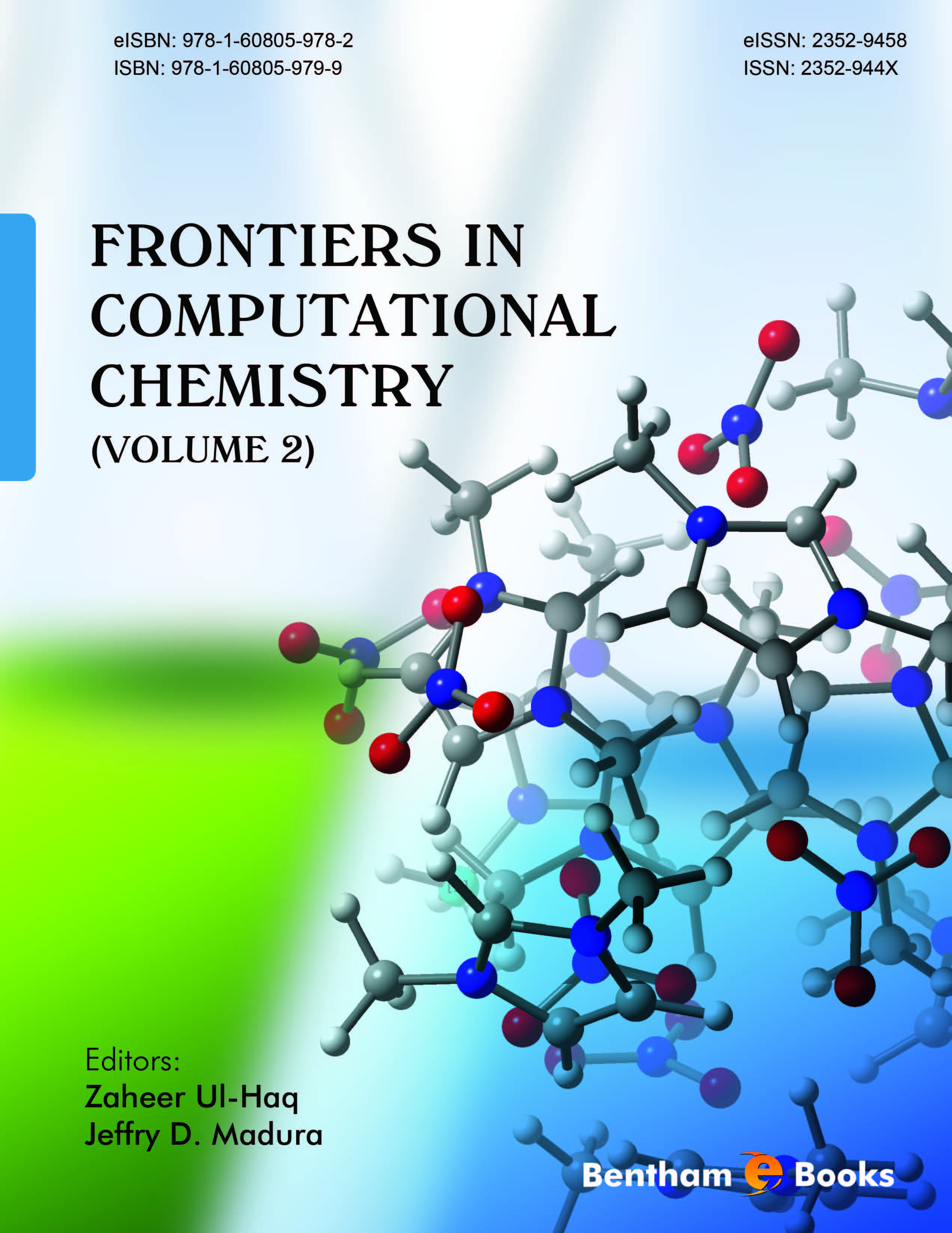Computational chemistry is a very diverse field spanning from the development and application of
linear free energy relationships (e.g. QSAR, QSPR), to electronic structure calculations, molecular
dynamics simulations, and to solving coupled differential equations (e.g. drug metabolism). The
focus of Frontiers in Computational Chemistry is to present material on molecular modeling
techniques used in drug discovery and the drug development process. Topics falling under this
umbrella include computer aided molecular design, drug discovery and development, lead
generation, lead optimization, database management, computer and molecular graphics, and the
development of new computational methods or efficient algorithms for the simulation of chemical
phenomena including analyses of biological activity. In this volume, we have collected nine
different perspectives in the application of computational methods towards drug design.
Chapter 1 “The Use of Dedicated Processors to Accelerate the Identification of Novel
Antibacterial Peptides” reviews the use of modern hardware advances to accelerate the
identification of new antibacterial peptides. Identification of new antibiotics is of paramount
importance as bacterial develop resistances to the current compounds used. The authors highlight
the advantages as well as the difficulties in developing algorithms for Field Programmable Gate
Arrays and Graphic Processing Units.
DNA damage by singlet oxygen is a well-known method to mitigate the presence of singlet
oxygen that remains elusive. In Chapter 2 “Computational Chemistry for Photosensitizer Design
and Investigation of DNA Damage” the authors review electronic structure methods to aid
understanding how singlet oxygen damages DNA as well as using what they have learned to aid in
the design of novel photosensitizers. They review the development of several porphyrin
photosensitziers based on molecular orbital calculations.
One challenge in the QSAR field is how to judge the predictive quality of the models. The authors
of Chapter 3 “How to Judge Predictive Quality of Classification and Regression Based QSAR
Models?” present a review of validating QSAR models using both traditional and new validation
metrics.
In Chapter 4 “Density Functional Studies of Bis-alkylating Nitrogen Mustards”, the authors
present a review of the application of DFT and DFRT methods on understanding the action of
nitrogen mustards. Nitrogen mustards are extensively used as a chemotherapeutic agent.
Identification of new nitrogen mustards is important in order to reduce their cytotoxicity and
increase their effectiveness.
The authors of Chapter 5 “From Conventional Prodrugs to Prodrugs Designed By Molecular
Orbital Methods” review a novel approach in the design of novel prodrugs using molecular
mechanics and molecular orbital methods. In this approach, the authors review methods in which
the prodrug is converted into the active drug without the enzyme.
Chapter 6 “Structural and Vibrational Investigation on a Benzoxazin Derivative with Potential
Antibacterial Activity” highlights the use of DFT methods along with experimental data to understand the properties and behavior of benzoxazin derivative. The authors present the use of
scaled quantum mechanical force field methodology and Atomis in Molecules theory to explain
the vibrational and bonding characteristics in benzoxazin.
In Chapter 7 “First Principles Computational Biochemistry with deMon2k” the authors present a
first principles approach to investigating biochemical principles using density functional methods
with the program deMon2k. Having an all-electron method to explore biochemical and
pharmacological processes; is an important tool in the computational chemist’s toolbox.
In Chapter 8 “Recent Advances in Computational Simulations of Lipid Bilayer based molecular
systems” the authors review computational simulations of lipid bilayers. Cell membranes are a
complex mixture of lipids and play a vital role in cellular function such as the control of processes
that cross the cell membranes. A review of several computational methods and complex lipid
mixtures is presented.
In this last chapter, “Data Quality Assurance and Statistical Analysis of High Throughput
Screenings for Drug Discovery”, the authors review high throughput screening (HTS) methods
bringing to light the challenges to identifying novel molecules from vast and diverse databases.
The authors also note the use of data from sophisticated biological assays in HTS.

